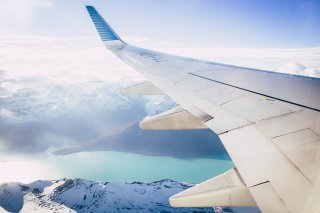
Over the last five years, an increasing number of executives and everyday travelers have turned to private air travel as a more attractive option than commercial flight. And experts expect to see this trend continue in 2020.
Here are some other non-commercial aviation trends aviation experts expect to see in the year and decade ahead.
Eco-Friendly Flights
Reducing their carbon footprint is becoming an increasingly important priority for executive travelers. As they see it, going green is not only the right planetary imperative; it also adds value to their own business ventures.
The coming year is likely to see a bigger investment in more efficient planes that will reduce fuel burn.
Since the planes used for private charter flights are less expensive than commercial jets, it may be easier to replace them with more fuel-efficient models, so the private aviation industry's evolution toward sustainability will proceed relatively quickly.
Electrically Powered Aircraft
While aircraft powered by electric motors most likely won't be a commercial feasibility for some time in the future, plenty of research is being done in this area.
NASA has successfully launched a number of unmanned aerial craft that rely upon solar- and fuel-cell battery systems.
To date, aircraft powered by electric batteries have far more limited carrying capacities, range and durability than aircraft powered by internal combustion engines. But, in the long run, electric airplanes may prove to work best for urban transportation, particularly in cities with heavy automobile traffic.
On-Demand Charters
Private jet ownership is generally thought of as one of the perks that comes with celebrity or a huge personal fortune. But thanks to the internet, that's changed drastically in recent years.
Jeffrey Carrithers, CEO of GlobalAir.com, the internet's largest aviation resource explains, "In 2020, digital media advertisers will fine-tune their tracking software to know when and where you will be taking your next trip and they'll offer solutions on the fly.
The consumer is now well entrenched in the availability of on-demand aircraft charter and fractional aircraft. This segment of general aviation will continue to grow at a fast pace and should expand further as long as the economy continues to be bullish."
These profit-seeking private aviation companies use an on-demand business model with competitive pricing and flexible flights.
Such companies will proliferate over the next ten years as customers increasingly come to appreciate the advantages of cost-effective flights with the capability of landing in many more destination airports.
Bad Weather Flying
Extreme weather events such as hurricanes and winter storms paralyze commercial air carrier traffic. In contrast, private charter jets, while adhering to the same safety guidelines, experience far fewer weather-related delays and cancellations.
Why is that? Commercial flights for the most part are constrained to predetermined hub and spoke networks. In contrast, private charter flights offer far more flexibility. If an airport is affected by inclement weather, your departure can be moved to an airport outside the weather pattern. There are 5,000 small airports in the U.S. after all, so private jets have many more options for takeoff and landing.
Private charter flights are able to adapt more easily once they're in the sky, too. Smaller planes can fly over and around inclement weather far more easily than commercial jets are able to.
In 2020, you can anticipate seeing many more executives book private charter jets when bad weather threatens a delay.
© 2025 NatureWorldNews.com All rights reserved. Do not reproduce without permission.





